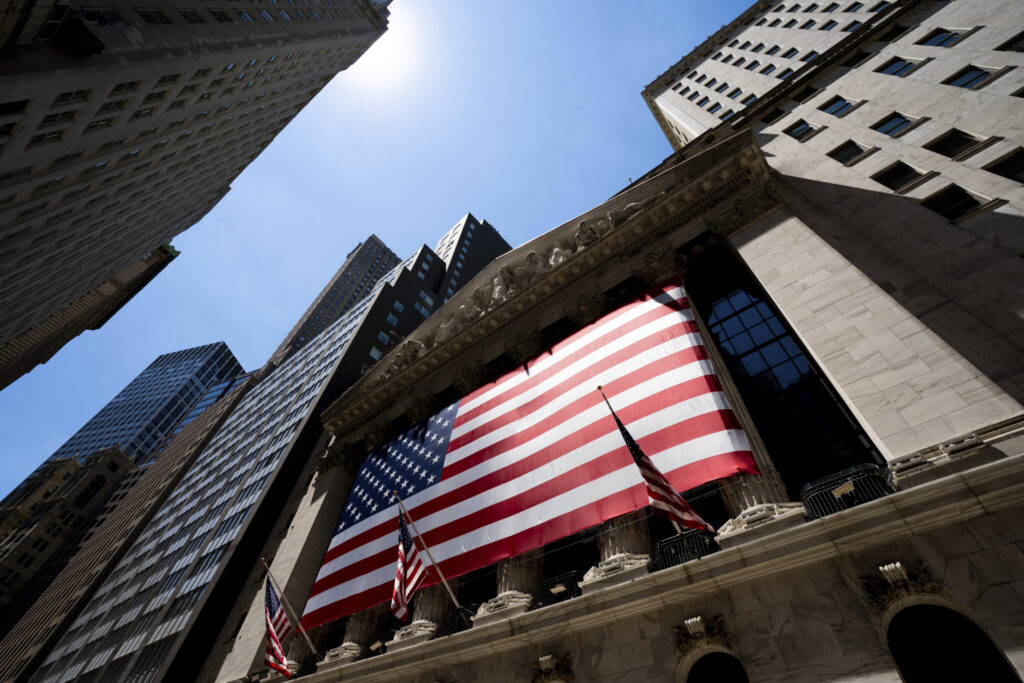Wall Street dropped on Tuesday as financial stocks fell after Moody’s overnight cut credit ratings on several small- to mid-sized U.S. banks and said it could downgrade some of the country’s biggest lenders. The agency cut the ratings on 10 lenders by one notch and placed six banking giants, including Bank of New York Mellon, US Bancorp, State Street and Truist Financial, on review for potential downgrades. The Associated Press has the story:
Wall Street slumps on worries about banks and the economy
Newslooks- NEW YORK (AP)
The S&P 500 was 1% lower in early trading, following up on losses for stocks across Europe and much of Asia. The Dow Jones Industrial Average was down 370 points, or 1%, at 35,102, as of 9:50 a.m. Eastern time, and the Nasdaq composite was 1.3% lower.
In the U.S., bank stocks dropped after Moody’s cut the credit ratings for several smaller and midsized ones amid a long list of concerns about their financial strength. Across the Pacific, stocks sank 1.8% in Hong Kong and 0.3% in Shanghai after a report showed exports for China’s troubled economy shrank by the most since the start of the pandemic in 2020.
The worries layered on top of a mixed set of earnings reports from big U.S. companies.
UPS fell 3% after it cut its forecast for revenue this year. It reported stronger profit for the spring but weaker revenue.
Eli Lilly helped to limit the market’s losses after jumping 16.4%. The medicine developer reported profit and revenue for the spring that both topped analysts’ expectations.
More jolts may be ahead for markets. The U.S. government later in the morning will report how many job opening were available across the country in June, a test of how resilient the job market remains. Economists expect a separate report to show U.S. manufacturing continues to struggle under the weight of much higher interest rates.
The Federal Reserve has hiked its main interest rate to the highest level in more than two decades in hopes of grinding down inflation. High rates work by slowing the entire economy bluntly, which has raised the risk of a recession but also helped inflation to moderate since its peak last summer.
Besides manufacturing, high rates have hit banks particularly hard. Moody’s said the rapid rise in rates has led to conditions that hurt profits for the broad industry, while knocking down the value of investments made when rates were super low. Such conditions helped cause three high-profile failures for three U.S. banks earlier in the spring, which shook confidence in the system.
Moody’s also said troubles may be coming for banks with lots of commercial real estate loans, which are hurting as the threat of a U.S. recession remains and work-from-home trends keep people out of offices.
M&T Bank, one of the banks whose credit rating Moody’s downgraded, fell 4.7%. Truist Financial, one of the banks that Moody’s said it’s reviewing for a possible downgrade, fell 4.5%.
Other, larger banks whose credit ratings weren’t affected also sank. JPMorgan Chase fell 2% and was one of the heavier weights on the S&P 500.
Later this week, the U.S. government will releases data on consumer and wholesale inflation, which could influence what the Federal Reserve does next with interest rates.
The hope on Wall Street is that the cooldown in inflation since its peak above 9% last summer will help persuade the Fed that upward pressure on prices is under control and no more rate hikes are needed. Forecasters expect Thursday’s data to show consumer prices rose by 3.3% in July over a year ago, an acceleration from June’s 3%.
But some economists and investors say getting that list bit of inflation moderation to the Fed’s target of 2% is likely to be the most difficult. They’re saying Wall Street has become convinced too quickly that the Fed can achieve a “soft landing” for the economy and that the 19.5% run for the S&:P 500 through the first seven months of this year was overdone.
In the bond market, Treasury yields tumbled as investors moved into investments considered safer.
The yield on the 10-year Treasury fell to 3.98% from 4.10% late Monday. It helps set rates for mortgages and other loans.
The two-year Treasury yield, which more closely tracks expectations for the Fed, fell to 4.73% from 4.79%.







